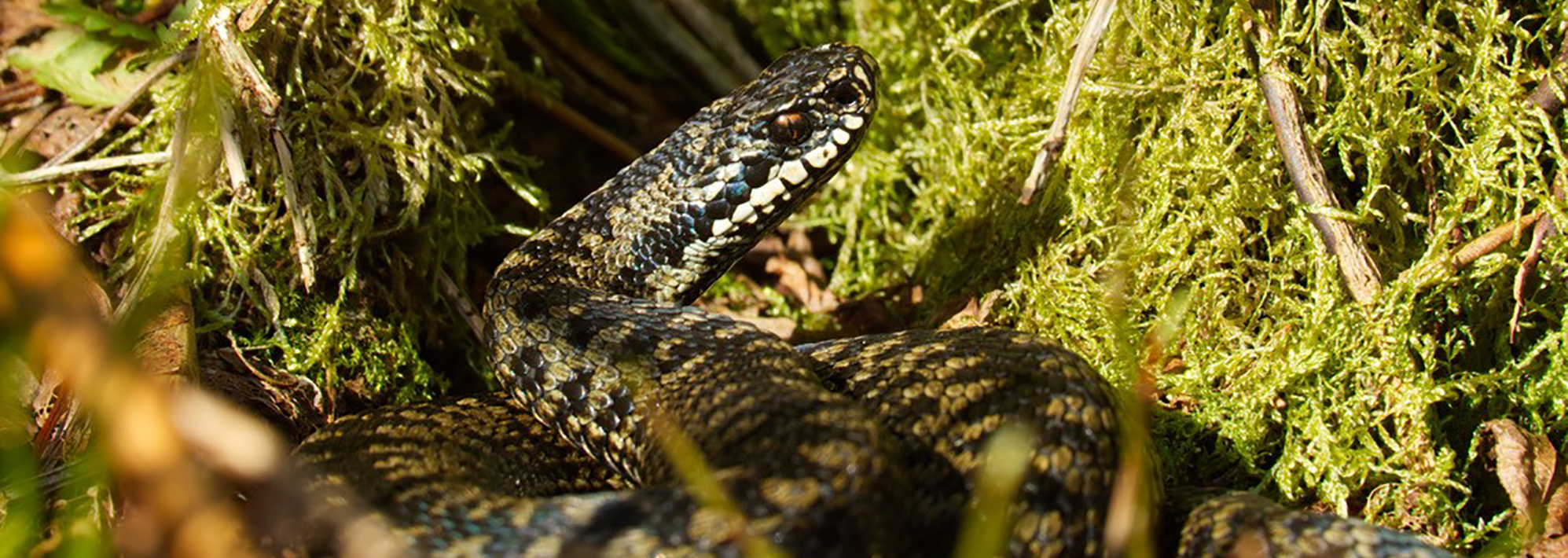Adder Watch
Have you seen an adder while out and about in Nidderdale National Landscape? We want to know!
Adders are disappearing from our countryside. A study by Make the Adder Count indicates that 90% of surveyed sites have declining adder populations.
How you can help
- Please don’t go actively searching for adders
If you happen to spot one while on a walk, let us know by submitting your sighting. The more we know about them and where they live, the more we can do to protect and champion this vulnerable species.
- By ensuring that any adders spotted are left undisturbed
If you see one, leave it alone and keep children and dogs at a safe distance. Also, don’t announce it’s location on social media!
- Helping us spread the message that adders are amazing animals and an important part of our local wildlife
About adders
The shy adder is the UK’s only venomous snake.
They like to live in moorland, heathland, open woodland glades, near old stone walls and on rocky slopes.
Adders are an excellent indicator of a healthy environment. If they are in decline it suggests that other species who share the same habitat may also be in trouble.
They hibernate over winter, often in groups. If their hibernation sites are destroyed it can have a devastating effect of the ability of the adders to survive.
Adders sunbathe to build up strength and flatten themselves to catch as many rays as possible. It’s really important not to disturb one if you see one sunning itself.
Spot an adder?
If you see an adder, leave it alone and keep children and dogs at a safe distance.
Adders will only bite as a last line of defence. They would much prefer to slip away unnoticed or be left alone. If bitten, seek medical help immediately.
- You’re most likely to see an adder between March and October
- Males are often grey with black zigzags on their backs
- Females are usually brown with a darker brown zigzags on their backs
- They typically range from 60 to 80cm in length
Slow-worms and common lizards
We’d also love to know if you spot any slow-worms or common lizards in Nidderdale National Landscape.

Slow-worms are a legless lizard and are smooth and shiny in appearance, with golden-grey skin. They can sometimes be found in gardens underneath objects or compost heaps. They typically range from 40 to 50cm in length.
Common lizards are usually brownish-grey in colour, often with rows of darker spots or stripes down the back and sides. They are often found sitting in the sunshine and will move very quickly if disturbed. They typically range from 10 to 15cm in length.
Please, for your own safety, don’t handle any of the reptiles!
Tell us what you’ve spotted
Fill in the form below to let us know about the reptile you’ve seen while in Nidderdale National Landscape. You can also email us at [email protected]
Please don’t share the location of any sightings with us on social media. It’s really important that any adders, slow-worms or common lizards aren’t disturbed by people going to look for them.
By providing your contact details, you’re agreeing to receive email updates from Nidderdale National Landscape. You can unsubscribe at any time by clicking the link in the footer of our emails. For information about our privacy practices, visit our Privacy and Cookies page.
* You can look up the grid reference for free by visiting gridreferencefinder.com
Adder © Trevor Baker
Slow-worm © Kelly Harmar
Common lizard © Charles J Sharp CC BY-SA 4.0 CC







